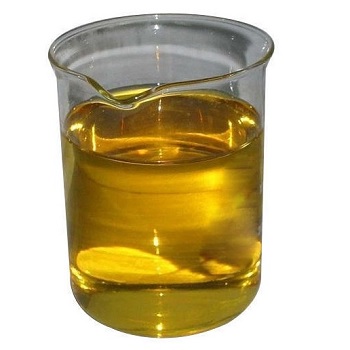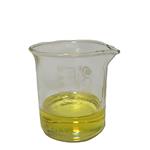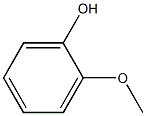Creosote
- CAS No.
- 8021-39-4
- Chemical Name:
- Creosote
- Synonyms
- CREOSOTE;creasote;CREOSOTE;woodcreosote;Creosote,wood;cresoate,wood;Natural Creosote;CREOSOTEBUSHRESIN;COAL TAR CREOSOTE;CREOSOTE COAL TAR
- CBNumber:
- CB2382221
- Molecular Formula:
- C7H8O2
- Molecular Weight:
- 124.13722
- MDL Number:
- MFCD00146582
- MOL File:
- 8021-39-4.mol
| Boiling point | 200-220 °C(lit.) |
|---|---|
| Density | 1.09 g/mL at 20 °C |
| Flash point | 74 °C |
| color | Yellowish, greasy |
| Odor | liquid with smokey odor |
| Odor Type | smoky |
| Merck | 13,2601 |
| Substances Added to Food (formerly EAFUS) | BEECHWOOD, CREOSOTE (FAGUS SPP.) |
| FDA 21 CFR | 172.515; 310.545 |
| EWG's Food Scores | 4-7 |
| FDA UNII | 3JYG22FD73 |
| ATC code | R05CA08 |
| Pesticides Freedom of Information Act (FOIA) | Coal tar, Creosote |
| EPA Substance Registry System | Wood creosote (8021-39-4) |
SAFETY
Risk and Safety Statements
| Symbol(GHS) |     GHS05,GHS06,GHS08,GHS09 |
|||||||||
|---|---|---|---|---|---|---|---|---|---|---|
| Signal word | Danger | |||||||||
| Hazard statements | H301+H311-H314-H332-H341-H373-H411 | |||||||||
| Precautionary statements | P202-P273-P280-P303+P361+P353-P304+P340+P310-P305+P351+P338 | |||||||||
| Hazard Codes | T,C | |||||||||
| Risk Statements | 23/24/25-34-48/20/21/22-68-52/53-37 | |||||||||
| Safety Statements | 26-36/37/39-45-61 | |||||||||
| RIDADR | UN 2922 8/PG 2 | |||||||||
| WGK Germany | 3 | |||||||||
| RTECS | GO5870000 | |||||||||
| Toxicity | TDLo orl-rat: 52,416 mg/kg/91D-C OYYAA2 21,899,81 | |||||||||
| NFPA 704 |
|
Creosote price More Price(2)
Creosote Chemical Properties,Uses,Production
Description
Creosote is the name used for a variety of products: wood creosote, coal tar creosote, coal tar, coal tar pitch, and coal tar pitch volatiles. These products are mixtures of many chemicals created by burning of beech and other woods, coal, or from the resin of the creosote bush.
Wood creosote is a colorless to yellowish greasy liquid with a characteristic smoky odor and sharp burned taste. It is soluble in water and is derived from the resin of leaves of the creosote bush and beechwood. 
Uses
Creosote is used in construction (roofing), railroad and utilities industries, and for wood treatment and waterproofing.
Coal tar creosote is the most common form of creosote in the workplace and at hazardous waste sites in the U.S. Coal tar creosote is widely used as a wood preservative.It is also used to treat skin diseases such as psoriasis and as an insecticide and fungicide.
Creosote in the Environment
Creosote that is in the environment has usually been released from industries that preserve wood. Creosote can be released into soil and water and can then move through the soil to groundwater. Groundwater is water found underground in cracks and spaces in soil, sand, and rocks. After creosote gets into groundwater, it may take many years to break down. Coal tar creosote that remains in soil or water is toxic to animals and possibly to humans.
The chemicals in creosote can enter the air and can also build up in plants and animals such as snails, shellfish, and oysters.
Health hazard
The majority of chemical components of creosote are aromatic and their odor is detectable by humans at very low concentrations. Most exposures to creosote products occur at very low levels that are not harmful. Short-term exposure to high levels of creosote products by direct contact with skin or by exposure to the vapors from these mixtures can cause sun sensitivity, irritation of the respiratory tract, and skin damage such as reddening, blistering or peeling. Animals fed large amounts of wood creosote at one time had convulsions and died, while those fed lower levels developed kidney and liver problems.
Humans are not likely to be exposed to such concentrations via environmental exposure. There is no evidence that creosote causes asthma; however, it is possible that at high levels it may worsen existing conditions.
Toxicokinetics
Creosotes and coal tar products can enter the body through the lungs, stomach, intestines and skin; although there are limited data quantifying absorption efficiency.
Some components of creosote may be stored in the body fat and may be found in breast milk. Coal tar components may be metabolized.
Components of creosotes and coal tar products are primarily excreted in the stool, with a small amount excreted in urine.
Chemical Properties
Yellow to dark brown, oily liquid with a distinctive pungent odor
Occurrence
Fagus species.
Uses
Wood creosote has been used as a disinfectant, a laxative, and a cough treatment, but has since been replaced by better medicines. Coal tar products are used in medicines to treat skin diseases such as psoriasis, and also as animal and bird repellents, insecticides, animal dips, and fungicides. Coal tar creosote is the most widely used wood preservative in the United States. Coal tar, coal tar pitch, and coal tar pitch volatiles are used for roofing, aluminum smelting, and coking.
Uses
Coal tar creosote has been used as a wood preservative pesticide in the United States since the late 1890s. This accounts for more than 97% of coal tar creosote production.Other uses include animal and bird repellent, insecticide, animal dip, fungicide, and pharmaceutical applications. Beechwood creosote has, in the past, been used for medicinal purposes.
Preparation
Starting materials are the heavy oils from wood tar; the material first is treated with NaOH to precipitate all saponifiable oils and subsequently with H2SO4; the raw creosote finally is purified by repeated fractional distillation
Definition
1. (wood creosote) An almostcolourless liquid mixture ofphenols obtained by distilling tar obtainedby the destructive distillationof wood. It is used medically as anantiseptic and expectorant. 2. (coaltarcreosote) A dark liquid mixture ofphenols and cresols obtained by distillingcoal tar. It is used for preservingtimber.
Production Methods
Wood creosote is obtained from wood tars, from beech and the resin from leaves of the creosote bush, and by distillation and is composed mainly of phenols, xylenols, guaiacol, and creosol. Coal tar creosote is produced by high-temperature carbonization and distillation of bituminous coal. Coal tar creosote contains liquid and solid aromatic hydrocarbons, tar acids, and tar base.At least 75%of the coal tar creosote mixture is polyaromatic hydrocarbons. Purification of the crude preparation is accomplished by distillation and extraction from suitable oils.
General Description
Colorless to yellowish oily liquid with a smoky odor and caustic burning taste.
Air & Water Reactions
May be sensitive to exposure to air. Slightly soluble in water.
Reactivity Profile
Phenols, such as CREOSOTE, do not behave as organic alcohols, as one might guess from the presence of a hydroxyl (-OH) group in their structure. Instead, they react as weak organic acids. Phenols and cresols are much weaker as acids than common carboxylic acids (phenol has Ka = 1.3 x 10^[-10]). These materials are incompatible with strong reducing substances such as hydrides, nitrides, alkali metals, and sulfides. Flammable gas (H2) is often generated, and the heat of the reaction may ignite the gas. Heat is also generated by the acid-base reaction between phenols and bases. Such heating may initiate polymerization of the organic compound. Phenols are sulfonated very readily (for example, by concentrated sulfuric acid at room temperature). The reactions generate heat. Phenols are also nitrated very rapidly, even by dilute nitric acid. CREOSOTE is incompatible with acacia, albumin, oxidizers and cupric, ferric, gold and silver salts.
Safety Profile
Confirmed carcinogen. When heated to decomposition it emits acrid smoke and irritating fumes.There is a fire hazard, CREOSOTE is combustible.
Carcinogenicity
The carcinogenicity of creosote oils has been studied quite thoroughly using mice. Studies indicate that coal tar creosote and several of its fractions can be carcinogenic when applied to the skin of mice and rabbits. Dermally applied coal tar creosote can also act as a tumor-initiating agent when applied prior to croton oil treatment.
Hazard
In aquatic sediments, several reactions can transform the chemicals released by the creosote preservatives into more dangerous chemicals. Most creosote preservative compounds have hazards associated with them before they are transformed. Cresol (m-, p-, and o-), phenol, guaiacol, and xylenol (1,3,4- and 1,3,5-) all are acute aquatic hazards prior to going through chemical reactions with the sediments. Alkylation reactions allows for the compounds to transition into more toxic compounds with the addition of R-groups to the major compounds found in creosote preservatives. Compounds formed through alkylation include: 3,4-dimethylphenol, 2,3-dimethylphenol, and 2,5-dimethylphenol, which are all listed as acute environmental hazards.
Creosote Preparation Products And Raw materials
Raw materials
Preparation Products
| Supplier | Tel | Country | ProdList | Advantage | |
|---|---|---|---|---|---|
| Sinoway Industrial co., ltd. | 0592-5800732; +8613806035118 | xie@china-sinoway.com | China | 992 | 58 |
| Hebei Mojin Biotechnology Co., Ltd | +8613288715578 | sales@hbmojin.com | China | 12469 | 58 |
| Henan Tianfu Chemical Co.,Ltd. | +86-0371-55170693 +86-19937530512 | info@tianfuchem.com | China | 21688 | 55 |
| career henan chemical co | +86-0371-86658258 | sales@coreychem.com | China | 29914 | 58 |
| Hebei Guanlang Biotechnology Co., Ltd. | +86-19930503282 | alice@crovellbio.com | China | 8829 | 58 |
| Xiamen AmoyChem Co., Ltd | +86-592-6051114 +8618959220845 | sales@amoychem.com | China | 6387 | 58 |
| Hubei xin bonus chemical co. LTD | 86-13657291602 | linda@hubeijusheng.com | CHINA | 22968 | 58 |
| Shandong chuangyingchemical Co., Ltd. | 18853181302 | sale@chuangyingchem.com | CHINA | 5909 | 58 |
| Chongqing Chemdad Co., Ltd | +86-023-6139-8061 +86-86-13650506873 | sales@chemdad.com | China | 39916 | 58 |
| SIMAGCHEM CORP | +86-13806087780 | sale@simagchem.com | China | 17367 | 58 |
Related articles
- Protonic ionic liquids for creosote wood treatment
- Creosote treated wood has been used extensively in non-residential scenarios such as railroad ties, utility poles, communicati....
- Sep 29,2022
Related Qustion
- Q:Why is creosote banned?
- A:Creosote has been removed from the general market as it is considered a carcinogen.
- Apr 17,2024
View Lastest Price from Creosote manufacturers
| Image | Update time | Product | Price | Min. Order | Purity | Supply Ability | Manufacturer | |
|---|---|---|---|---|---|---|---|---|
 |
2024-06-04 | Natural Creosote
8021-39-4
|
US $0.00-25.00 / KG | 1KG | 98% up, JP14/BPC1959 | 20 tons | Sinoway Industrial co., ltd. | |
 |
2023-08-22 | CREOSOTE
8021-39-4
|
US $0.00 / KG | 1KG | 99% | 50000KG/month | Hebei Mojin Biotechnology Co., Ltd | |
 |
2023-03-06 | CREOSOTE
8021-39-4
|
US $5.60 / KG | 1KG | 99% | 5000kg | Hebei Guanlang Biotechnology Co,.LTD |
-

- Natural Creosote
8021-39-4
- US $0.00-25.00 / KG
- 98% up, JP14/BPC1959
- Sinoway Industrial co., ltd.
-

- CREOSOTE
8021-39-4
- US $0.00 / KG
- 99%
- Hebei Mojin Biotechnology Co., Ltd
-

- CREOSOTE
8021-39-4
- US $5.60 / KG
- 99%
- Hebei Guanlang Biotechnology Co,.LTD
8021-39-4(Creosote)Related Search:
1of3





